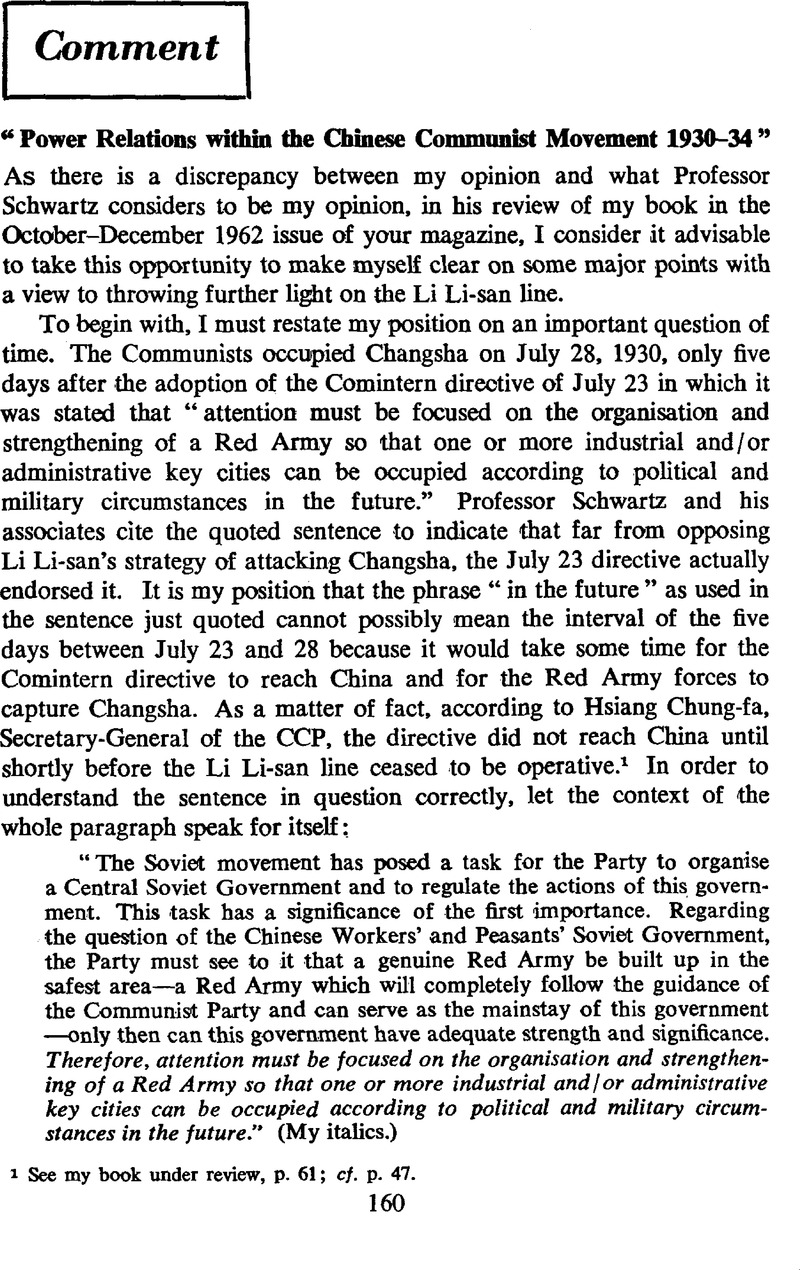No CrossRef data available.
Article contents
Abstract

- Type
- Comment
- Information
- Copyright
- Copyright © The China Quarterly 1963
References
1 See my book under review, p. 61; cf. p. 47.
2 Li-san, Li, “The Story and Lesson of the August First Revolution,” printed in Central Correspondence, 10 1930, 1927, pp. 24–42Google Scholar; “Comrade Kuo-t'ao's Letter to the Enlarged Session [of the Provisional Central Politburo],” 11 8, 1927Google Scholar, printed in Central Correspondence, 11 30, 1927, pp. 63–72Google Scholar; “A Reply from the Central [Standing Committee to Chang Kuo-t'ao],” ibid. p. 73.
3 “Resolution on the Chinese Question” adopted by the Ninth Plenum of the ECCI, February 25, 1928, sections 1, 10.
4 Ibid. section 10: “A Reply to Comrade Tu-hsiu,” No. 2, dated the middle of December 1927, printed in Central Political Correspondence (formerly known as Central Correspondence), No. 14, n.d., pp. 103–104.Google Scholar
5 Schwartz, Benjamin, Chinese Communism and the Rise of Mao (Cambridge: Harvard Un. Press, 1951, p. 138et seq.Google Scholar
6 “Political Resolution” adopted by the Sixth National Congress, July 9, 1928, section IV–11–B.
7 Mao Tse-tung Selected Works (Chinese edition), I, p. 106Google Scholar; (English edition), I, p. 122.
8 “Letter from the ECCI to the Chinese Communist Party” regarding the political situation and the current tasks, n.d., toward the end of section 1 entitled “The Basic Contradictions in the Present Political Situation.”
9 For details of information, see my book, pp. 27, 61, 78, 80, 81, 86, 88, 89, 94, 95, 133, 145.


